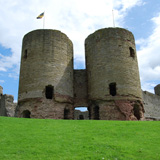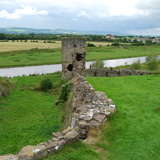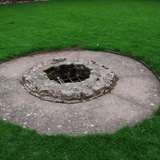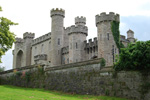History
Rhuddlan Castle resides next to the River Clwyd in Denbighshire, Wales. Before its construction, a motte and bailey style timber castle existed to the south, built by Robert of Rhuddlan in 1073, shortly after the Battle of Hastings. Known as Twthill Castle, it remained serviceable until approximately 1242, with many interior buildings still intact.
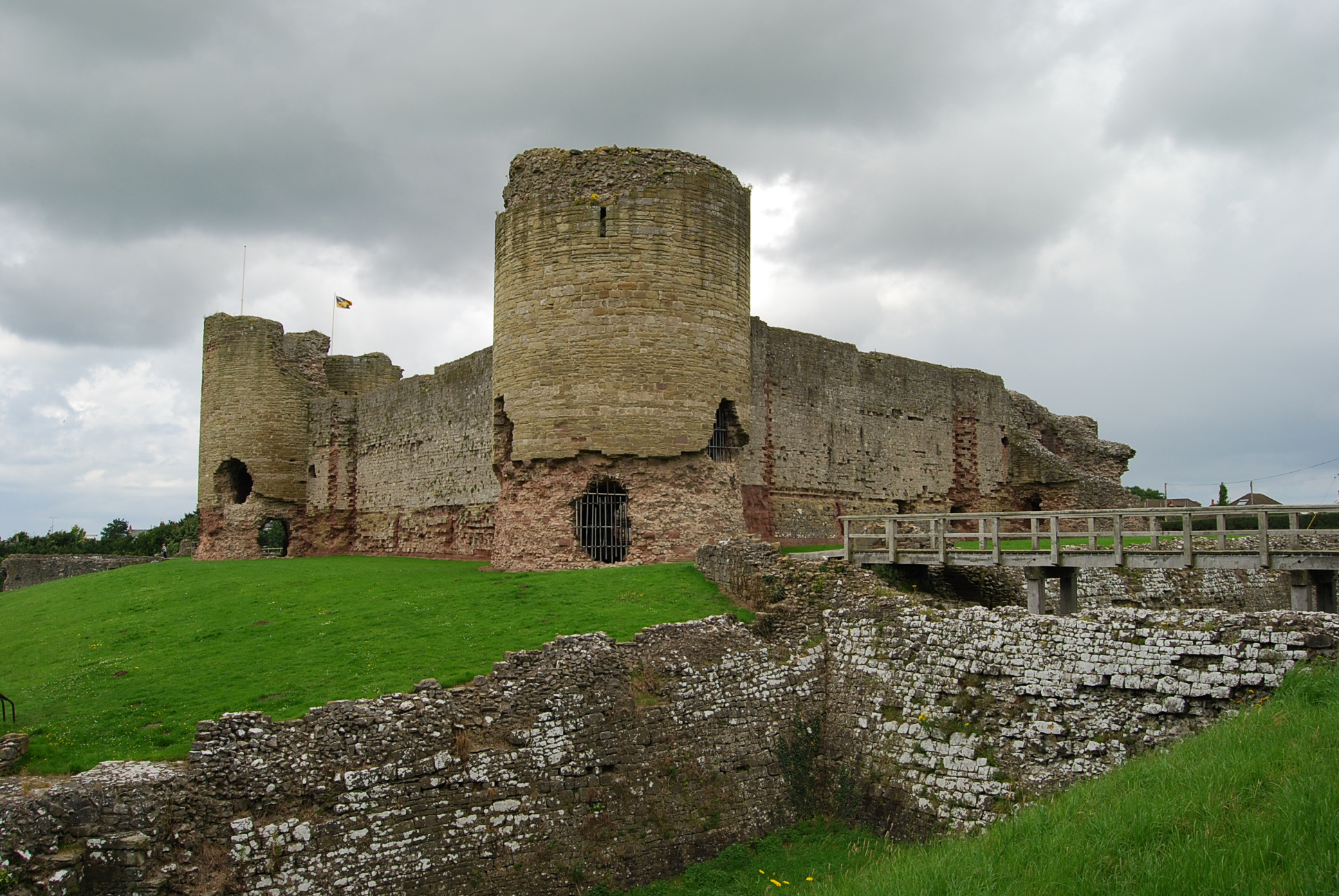
In 1272, Edward I was crowned King of England upon returning from the Crusades, where he learned first-hand the art of war and military fortifications. Despite his royal status, Prince Llywelyn of Wales refused to pay homage to him. A few years later, Edward decided to pursue Llywelyn's submission by force and began preparations to control Wales. On July 22nd, 1277, Edward established an advanced base at Flint, where construction of Flint Castle began. On August 22nd, he moved his headquarters to Rhuddlan and utilized buildings within the old motte and bailey castle. In November, Llywelyn formally surrendered to Edward at Rhuddlan.
Before the formal surrender, Edward began constructing Rhuddlan Castle in September 1277, which continued without pause until March 1282. Work began under Master Bertram, a Gascon engineer, followed by James of St. George approximately six months later. In 1278, as work progressed, King Edward and his wife spent a week at Rhuddlan and expressed their desire for royal apartments. By 1280, construction progressed enough to add lead roofs onto the stone-based towers and shingles on the King's Hall in 1281. Master James eventually completed both Rhuddlan Castle and Flint Castle and oversaw the construction of Conwy, Caernarfon, Harlech, and Beaumaris castles. These structures in Northern Wales collectively became known as Edward I's iron ring of castles. In 1285, Rhuddlan Castle sustained some damage requiring repair.
According to tradition, Rhuddlan Castle served as the location where Edward I declared he would appoint a Prince who was born in Wales, spoke no English, and was devoid of a tarnished reputation. He later named his infant son Edward, who was born at Caernarfon in April 1284. However, it was not until 1301 that he formally created Prince of Wales. While occupying Rhuddlan Castle in March 1284, Edward I implemented the Statute of Rhuddlan. This historic statute created the shires of Flint, Caernarvon, Anglesey, Merioneth, Cardigan, and Carmarthen. It established a system of government lasting until Henry VIII's Act of Union in 1536.
In 1294, Rhuddlan Castle was attacked during the Welsh uprising Madog ap Llywelyn but was not taken. It remained under English control and was one of the stops by King Richard II on his way to Flint Castle before being taken prisoner by his rival, Henry IV, in 1399. The castle was again attacked the following year, in 1400, by Welsh forces under Owain Glyndwr, where the castle again held out despite the town being badly damaged.
Rhuddlan Castle served a significant role during the English Civil War when it was garrisoned for King Charles of England until July 1646 upon surrender to the parliamentarians after a siege. Thereafter, it was decided to render the castle untenable with Roger Hanmer, High Sheriff of the county, tasked regarding its "care and demolishment." As a result, the current state of the ruinous structure dates back to this time. In 1944, Rhuddlan Castle and Twthill were placed in state care, and work began on conserving the remains. Today, the site is maintained by Cadw, which represents the Welsh Government's historic environment service.
Castle Highlights
Rhuddlan Castle represents a classic Edwardian concentric castle characterized by two concentric rings of walls for parallel lines of defense. The inner ward is surrounded by a symmetrical diamond-shaped set of walls with towers located at the north and south ends of the castle, with twin towers flanking each gatehouse at both the east and west corners. The outer ward is surrounded by a shorter wall that enables archers and crossbowmen to fire weapons from inner walls over the heads of outer wall defenders.
From an architectural perspective, the spectacular portions of Rhuddlan Castle include its massive twin four-story towers and West Gatehouse, which served as the main entrance to the inner ward and housed principal apartments. Tops of the towers originally included crenellations that provided additional protection for archers. Moreover, Gillot's Tower situated along the southern corner of the outer ward, protected the Dock Gate from potential threats approaching via River Clwyd. As a noteworthy item, most of the smooth stones comprising the lower ashlar stone of Rhuddlan Castle were stolen through the years as villagers removed them to build houses nearby.
Rhuddlan Castle should take less than a day to visit as it can be thoroughly explored in less than two hours. Other noteworthy attractions nearby include Conwy Castle and Flint Castle.
Rhuddlan Castle has a legend.
